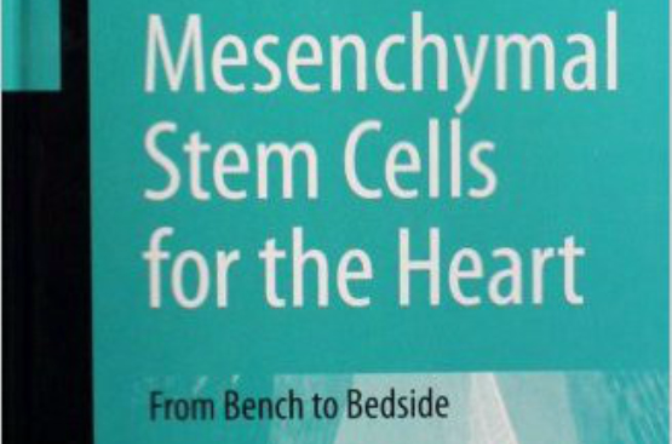《間充質幹細胞在心血管疾病中的套用:從基礎到臨床》 是浙江大學出版社出版的圖書, ISBN是9787308061674
基本介紹
- 書名:間充質幹細胞在心血管疾病中的套用:從基礎到臨床
- 頁數:113頁
- 裝幀:精裝
- 開本: 16
圖書信息,作者簡介,內容簡介,目錄,
圖書信息
出版社: 浙江大學出版社; 第1版 (2008年11月1日)
正文語種: 簡體中文
ISBN: 9787308061674
條形碼: 9787308061674
尺寸: 23.6 x 15.2 x 1.4 cm
重量: 358 g
作者簡介
Jian'an Wang,MD,PhD,Professor of Cardiology at Zhejiang University and investigator at Loma Linda University,Southern California,has broad expertise in the molecular and cellular biological processes underlying cardiovascular disease.He has won the Chinese Medical Science and Technology Medal of Honor.
內容簡介
《間充質幹細胞在心血管疾病中的套用:從基礎到臨床(英文版)》主要內容包括:Stem cell research has the potential to affect the lives of millions of people around the world.This research is now regularly front-page news,and realizing the promise ofmesenchymal stem cells for yielding new medical therapies will require us to grapple with more than just scientific uncertainties.Mesenchymal Stem CeUs for the Heart From Bench to Bedside presents the cytobiological characteristics of mesenchymal stem cells from the isolation,culture,transmembrane ion currents,migration and differentiation in vitro to the repairing of injured myocardium and tissue reconstruction in vivo,including the results of basic research and the real possibility for treatments and ultimately for cures for cardiac diseases for which adequate therapies do not exist.The book is intended for clinical stem cell researchers in cardiovasology,hematology,cytobiology,molecular biology,cell and tissue engineering,and other related fields.
目錄
1 MSCs Isolation and Culture Ex Vivo
1.1 Cell Isolation
1.1.1 Direct Adherence Method
1.1.2 Density Gradient Centrifugation
1.1.3 Magnetic Microbead or Flow Cytometry Method
1.2 Cell Culture
1.2.1 Materials
1.2.2 Procedures
1.3 Cell Cryopreservation and Thawing
1.3.1 Materials
1.3.2 Procedures
References
2 MSCs Identification
2.1 Minimal Criteria
2.2 Some Comments of the Criteria
2.3 Other Methods
2.3.1 Morphology Characteristics
2.3.2 Other Markers
2.4 Conclusion
References
3 Biological Characteristics of MSCs
3.1 Surface Markers and Paracrine Characteristics
3.1.1 Surface Markers
3.1.2 Paracrine Characteristics of MSCs
3.2 Electrophysiological Properties of MSCs and Their Electric Coupling with Cardiomyocytes
3.2.1 Characterization of Ion Channels in MSCs
3.2.2 Why Does an Individual Cell Express Different Currents?
3.2.3 Electric Coupling of MSCs with Host Cardiomyocytes
3.3 Proliferation of MSCs and Telomerase Properties
3.3.1 Structure and Function of Telomeres and Telomerase
3.3.2 Telomere and Telomerase in MSCs
3.4 Multilineage Transdifferentiation of MSCs
3.4.1 MSCs and Cardiomyogenesis
3.4.2 Differentiation Fate of MSCs
3.5 Immunological Characteristics of MSCs
3.5.1 Immunological Characteristics of MSCs
3.5.2 In vivo Studies
3.5.3 Imnmne-related Properties of MSCs in Cardiology...
3.6 Conclusion
References
4 Utilization of MSCs for Repairing Cardiomyocytes
4.1 Application of MSCs on Myocardial Infarction
4.2 Application of MSCs on Cardiomyopathy and Chronic Heart Failure
4.3 Conclusion
References
5 Current Status of MSCs in Clinical Application
5.1 The Type and Number of Transplanted Cells
5.2 Cell Preparation
5.3 The Time Point and Pathway of Cell Transplantation
5.4 Others
5.5 Conclusion
References
6 MSCs as a Vector of Gene Engineering
6.1 Adenoviruses and Angiogenesis-related Genes
6.2 Adeno-associated Virus (AAV) and Anti-inflammation Related Genes
6.3 Retrovirus and Anti-apoptosis Related Genes
6.4 Lentivirus and Pacemaker Current Gene
6.5 Conclusion
References
7 Feasibility of MSCs Transplantaion
7.1 General Ethical Considerations
7.2 Safety Issues
7.3 Informed Consent
7.4 Conclusion
References
8 Status and Expectation of MSCs Therapy
8.1 Clinical Application and Outcomes
8.2 Mechanism of Therapeutic Effects
8.3 Expectations with MSCs Therapy
References
Index

